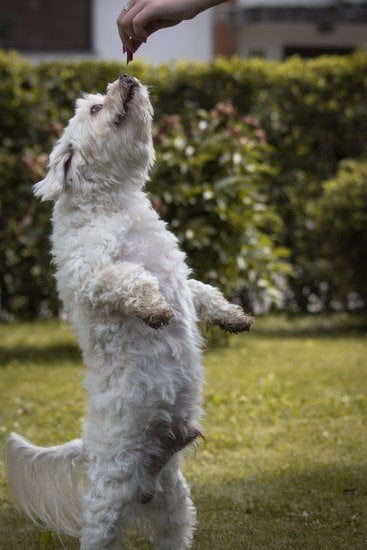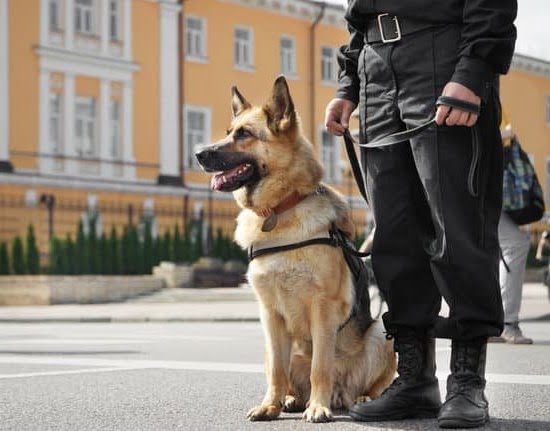Service dogs are extraordinary animals that provide vital assistance and support to individuals with disabilities. They possess an incredible ability to perform tasks that aid their handlers in daily life, making it easier for them to navigate the world with greater independence.
But behind these remarkable creatures lies a group of unsung heroes: the trainers who dedicate their time, expertise, and love to transforming these dogs into highly skilled service companions. In this article, we will delve into the world of service dog training and uncover the invaluable role played by those who train these exceptional animals.
The importance of service dogs cannot be overstated. They have the ability to significantly enhance the quality of life for individuals with various disabilities, including mobility issues, visual or hearing impairments, psychiatric disorders, and many others.
These incredible animals are meticulously trained to perform specific tasks that cater to the unique needs of their handlers, whether it’s guiding them safely through crowded areas, alerting them to sounds or alarms they may not hear, retrieving dropped items, or even providing emotional support during times of distress. The impact that service dogs have on their handlers’ lives is immeasurable and far-reaching.
To fully understand service dogs and appreciate their immense value, it is important to explore the origins and evolution of these remarkable animals. Throughout history, humans have recognized the potential benefits of working alongside canines for various tasks.
From ancient civilizations using dogs for hunting and guarding purposes to more recent use in military operations and law enforcement agencies, dogs’ impressive abilities have been utilized in countless ways. This historical background sets the stage for understanding how service dogs have emerged as highly specialized partners for individuals with disabilities over time.
In the following sections of this article, we will take a closer look at different aspects related to service dog training. We will explore professional organizations that provide comprehensive training programs for aspiring trainers and institutions dedicated to fostering excellence in this field. Additionally, we will delve into certification processes and industry standards that ensure a high level of competence and professionalism among service dog trainers.
Understanding the rigorous training process itself, as well as the techniques and steps involved, will provide valuable insight into the dedication and skill required to produce successful service dogs. Ultimately, we will celebrate the achievements of these incredible animals and their trainers through uplifting success stories that exemplify their profound impact on individuals’ lives.
As we embark on this journey into the world of service dog training, we will gain a deep appreciation for the dedication and commitment displayed by those who train these extraordinary animals. The importance of their role cannot be overstated, as they are responsible for empowering individuals with disabilities to live more fulfilling lives.
Through exploring emerging trends and innovations in this field, we will come to recognize that service dog training is a dynamic discipline that continuously evolves to meet the unique needs of both dogs and their handlers. Join us as we unpack the fascinating world of service dogs and pay tribute to those who give them the skills they need to change lives.
What are Service Dogs
Service dogs are specially trained animals that provide invaluable assistance to individuals with disabilities. These remarkable canines are trained to perform a wide range of tasks that help mitigate their handlers’ disabilities, allowing them to live more independent and fulfilling lives. The role and purpose of service dogs extend far beyond being companions; they truly become an integral part of their handlers’ daily lives.
Defining the Role
The primary role of service dogs is to assist individuals with disabilities in performing specific tasks. These tasks can vary depending on the type of disability and the individual’s unique needs.
For example, guide dogs are trained to assist people who are visually impaired or blind by guiding them safely through obstacles and navigating various environments. Hearing dogs, on the other hand, are trained to alert individuals who are deaf or hard of hearing to sounds such as doorbells, incoming phone calls, or emergency alarms.
The Purpose
The purpose of service dogs goes beyond providing physical support; they also have a profound impact on their handlers’ emotional well-being. These amazing animals offer companionship, comfort, and emotional support to individuals with mental health conditions such as post-traumatic stress disorder (PTSD), anxiety disorders, or depression. Service dogs provide love and unconditional acceptance, helping their handlers feel less isolated and more connected to the world around them.
In addition to their practical tasks and emotional support, service dogs act as ambassadors for people with disabilities, breaking down societal barriers and raising awareness about different abilities. By accompanying their handlers in public places like stores, restaurants, or hospitals, these highly trained animals challenge stigmas and prejudices while showcasing the incredible skills they possess.
Overall, service dogs play a vital role in enhancing the quality of life for individuals with disabilities by assisting them in numerous ways while also offering profound emotional support. Their unwavering dedication and companionship make them true heroes for those they serve.
The History of Service Dogs
Service dogs have a rich history that can be traced back thousands of years. Their origins can be found in ancient civilizations, where they were often utilized for hunting and herding purposes. However, their role quickly expanded beyond these tasks, as people began to recognize the intelligence and loyalty of these remarkable animals.
One of the earliest documented examples of service dogs dates back to Ancient Greece, where they were used in warfare. These dogs were trained to protect soldiers and carry messages between camps. The Romans also employed service dogs in war, with accounts of them being used for tracking and sentry duty.
As time went on, service dogs began to play a more significant role in society beyond the military. In the 18th century, there was a growing need for guide dogs for individuals with visual impairments. Johann Wilhelm Klein is credited with training the first guide dog specifically for this purpose in Vienna around 1819.
In the early 20th century, World War I had a profound impact on service dog training. Dogs were utilized as messengers and search-and-rescue animals during the war, showcasing their remarkable abilities in aiding humans under difficult circumstances. This led to an increased recognition of their value and potential for assisting individuals with disabilities.
Today, service dogs are trained to assist individuals with various disabilities, including physical disabilities, limited mobility, epilepsy, diabetes, post-traumatic stress disorder (PTSD), and autism spectrum disorder (ASD). Service dog training has evolved significantly over the years, incorporating modern techniques rooted in positive reinforcement methods.
Understanding the history of service dogs provides valuable insight into how these incredible animals have become integral parts of our society today. Their origin story showcases their innate skills as well as highlights the tireless efforts of trainers throughout history who recognized their potential and worked diligently to train them for different purposes.
Who Trained Service Dogs
Service dogs are incredible animals that provide invaluable support and assistance to individuals with disabilities or special needs. These remarkable creatures are able to perform a wide range of tasks that improve the quality of life for their human partners. However, behind every service dog is a dedicated and skilled trainer who plays a crucial role in shaping these animals into the heroes they become.
Trainers of service dogs often come from diverse backgrounds, but they share a common passion for helping others and making a positive impact in people’s lives. They undergo extensive education, training, and certification programs to develop the necessary skills to train and handle service dogs effectively. Without their expertise, these dogs would not be able to fulfill their roles as companions, helpers, and even lifesavers.
There are various professional organizations and institutions that offer specialized training programs for service dog trainers. These organizations provide comprehensive courses that cover everything from basic obedience training to advanced tasks specific to different types of disabilities or needs. Some notable organizations include Assistance Dogs International (ADI), Canine Companions for Independence (CCI), and Guide Dogs for the Blind (GDB).
In addition to formal education, there are certain qualifications and standards that service dog trainers must meet. Certification programs help ensure that trainers have the necessary knowledge and skills required to train service dogs effectively and ethically. These certifications often involve rigorous assessments of both theoretical understanding and practical abilities in working with service dogs.
Overall, the heroes behind these remarkable animals are the dedicated trainers who pour their hearts into raising, teaching, and nurturing them into reliable partners for those in need. Their expertise helps transform puppies into highly trained assistance dogs that make a tangible difference in people’s lives. The next section will delve deeper into the training process used by these skilled individuals to shape service dogs into capable companions.
Professional Organizations
Within the field of service dog training, there are several professional organizations that play a pivotal role in providing training programs and establishing standards for service dogs. These organizations not only ensure that service dogs are properly trained but also promote the well-being of both the dogs and the individuals they assist.
The Role of Professional Organizations
Professional organizations dedicated to service dog training serve as valuable resources for individuals in need of a service dog as well as aspiring service dog trainers. They offer comprehensive training programs that cover various aspects of service dog training, including obedience training, socialization, task-specific skills, and public access rights.
These organizations also provide guidance and support to those interested in becoming certified service dog trainers. They often have strict requirements for certification, including extensive experience working with dogs, passing written and practical exams, and maintaining ethical standards in animal welfare.
Training Programs and Institutions
There are numerous reputable organizations and institutions globally known for their contributions to the field of service dog training. For instance, Canine Companions for Independence is one such organization that provides highly specialized assistance dogs to children, adults with disabilities, and veterans free of charge. They have a comprehensive program that encompasses breeding, raising puppies, advanced training techniques, as well as follow-up support.
Another notable institution is Assistance Dogs International (ADI), an accrediting body that sets standards for assistance dog programs worldwide. They provide guidance on best practices in training and certification for both service dogs and their trainers. ADI-accredited programs adhere to stringent criteria ensuring not only high-quality training but also ongoing support for both the dogs and recipients throughout their partnership.
Moreover, many universities have established research centers or departments dedicated to the study of canine behavior and assistance animal training. These academic institutions contribute significantly to advancing knowledge in this field through research initiatives while also offering educational opportunities such as degree programs or workshops for aspiring trainers.
By partnering with these professional organizations and training programs, trainers have access to valuable resources, networking opportunities, and ongoing professional development to enhance their skills and stay updated with the latest techniques in service dog training. Having this support and recognition is crucial for both the trainers’ professional growth and the overall quality of service dogs provided to those in need.
Certification and Standards
Service dog training is a meticulous process that requires skilled trainers with specific qualifications. In order to ensure the highest standards of training for service dogs, there are certifications and qualifications that trainers must meet. These rigorous standards help to guarantee that service dogs are properly trained to perform their essential tasks and provide assistance to individuals with disabilities.
One well-known certification organization for service dog trainers is the Certification Council for Professional Dog Trainers (CCPDT). This organization offers the Certified Professional Dog Trainer (CPDT) certification, which has become highly recognized in the industry. To qualify for this certification, trainers must have at least 300 hours of dog training experience within the past five years, pass a comprehensive exam, and agree to adhere to a strict code of ethics.
In addition to CCPDT, there are also other reputable organizations that offer certifications specifically tailored to service dog trainers. The International Association of Assistance Dog Partners (IAADP) provides certifications such as Assistance Dog Trainer-Primary or Assistance Dog Trainer-Secondary. These certifications require both theoretical knowledge and practical experience in training service dogs.
It is important to note that while certification can demonstrate a trainer’s competence, it is not the sole indicator of skill or expertise. Many professional dog trainers gain valuable experience through internships or apprenticeships under seasoned mentors. Moreover, trainers who have been certified by these reputable organizations often continue their education through workshops, seminars, and conferences to stay updated on the latest techniques and advancements in service dog training.
The Training Process
Training a service dog is a rigorous process that requires time, patience, and expertise. This section will delve into the steps and techniques used to train these remarkable animals, highlighting the dedication and skill of the trainers.
The training process for service dogs typically begins when they are puppies, usually around 8 weeks old. During this critical period of their development, trainers focus on basic obedience skills such as sit, stay, come, and walking politely on a leash. These foundational commands form the basis for more advanced training later on.
As service dogs progress in their training, they undergo specialized instruction based on their intended role. For example, guide dogs for individuals with visual impairments are trained to navigate obstacles and follow directional commands. Hearing dogs learn to alert their owners to specific sounds such as smoke alarms or doorbells. Mobility assistance dogs are taught tasks like retrieving objects or helping with balance and stability.
It is important to note that positive reinforcement is a key component of service dog training. Trainers use rewards such as treats or praise to reinforce desired behaviors and discourage undesirable ones. This creates a bond of trust between the dog and trainer, promoting a positive learning environment.
Overall, the training process for service dogs involves a combination of obedience training, task-specific instruction, socialization with various environments and distractions, as well as public access training. This comprehensive approach ensures that service dogs are prepared to assist individuals with disabilities in real-world situations.
| Training Step | Techniques Used |
|---|---|
| Basic Obedience | Positive reinforcement (treats/praise), clicker training |
| Task-Specific Training | Luring, shaping, targeting |
| Socialization | Exposure to various environments, noises, and distractions |
| Public Access Training | Practicing good manners in public settings |
Success Stories
Service dogs have a remarkable ability to transform the lives of individuals with disabilities. These incredible animals are trained to assist people with specific needs, such as visual impairments, physical disabilities, and psychiatric conditions. The bond between service dogs and their handlers is often life-changing, providing a sense of independence, companionship, and support. In this section, we will explore some inspiring success stories that highlight the incredible impact that service dogs and their trainers have had on individuals’ lives.
- Blindness: One of the most well-known roles of service dogs is guiding individuals who are blind or visually impaired. These dogs undergo extensive training to navigate various environments, avoiding obstacles and ensuring the safety of their handlers. For many blind individuals, having a service dog means gaining independence in daily activities such as walking down the street or traveling on public transportation.
The story of Sarah and her guide dog Charlie serves as a touching example of the profound connection between a blind individual and their service dog. Sarah’s life was transformed after receiving Charlie – she gained confidence in her ability to navigate the world around her and felt a renewed sense of freedom. - Autism: Service dogs also play a vital role in supporting individuals with autism spectrum disorder (ASD). They are trained to provide comfort during meltdowns or episodes by applying deep pressure therapy or using other calming techniques. The story of Jake showcases how a specially trained autism service dog named Max changed his life.
Before Max entered Jake’s life, he struggled with sensory overload and anxiety in public places such as supermarkets or crowded events. With Max by his side, Jake not only developed coping mechanisms but also gained social skills by building friendships with other kids who were fascinated by his extraordinary companion. - PTSD: Post-traumatic stress disorder (PTSD) can have devastating effects on those who have experienced trauma. However, service dogs have shown immense potential to help individuals with PTSD manage their symptoms and regain a sense of normalcy in their lives. Jake, a veteran who served in the military, suffered from severe PTSD after returning from combat.
His constant hypervigilance and debilitating panic attacks made it difficult for him to navigate everyday life. With the support of his service dog, Trigger, Jake experienced a significant reduction in his anxiety levels and was able to gradually reintegrate into society. Trigger’s ability to alert Jake during moments of distress gave him a renewed sense of security and allowed him to regain control over his life.
These heartwarming success stories serve as a testament to the dedication and skill of service dog trainers. The bond they foster between service dogs and their handlers is an extraordinary example of the power of compassion and connection. Through their tireless efforts, these trainers have transformed the lives of countless individuals by providing them with invaluable support, independence, and unconditional love.
Emerging Trends
As the demand for service dogs continues to grow, there is a constant need for innovation and new methods in training these exceptional animals. In this section, we will explore some of the emerging trends that are shaping the future of service dog training.
One significant trend in service dog training is the use of technology. With advancements in wearable devices and smart technologies, trainers can now utilize tools such as GPS trackers, activity monitors, and even virtual reality simulations to enhance the training process. These technological innovations provide trainers with real-time data and valuable insights into a dog’s behavior, allowing for more personalized and effective training techniques.
Another emerging trend is the incorporation of positive reinforcement-based training methods. Traditional methods like punishment or dominance-based techniques are being replaced with reward-based approaches that focus on building a strong bond between the dog and its handler. Positive reinforcement not only motivates the dog to learn but also reinforces desired behaviors, resulting in more successful outcomes.
Furthermore, there is a growing recognition of the importance of mental stimulation and enrichment in service dog training. Mental exercises such as puzzle-solving, scent work, and interactive games are being incorporated into training routines to keep dogs mentally engaged and to prevent boredom or burnout. These activities not only improve a dog’s cognitive abilities but also promote their overall well-being.
The field of service dog training is continuously evolving to adapt to new challenges and meet the changing needs of individuals relying on these remarkable animals. The emerging trends discussed here represent just a glimpse into the innovative approaches shaping the future of service dog training. With ongoing research, collaboration among professionals, and an emphasis on animal welfare, we can expect even more exciting advancements in this field in the years to come.
Conclusion
In conclusion, the training of service dogs is an invaluable and remarkable process that requires dedication, expertise, and compassion. Throughout history, these extraordinary animals have played a crucial role in enhancing the lives of individuals with disabilities or special needs. Behind these incredible dogs are trainers who devote their time and energy to ensuring that each service dog is prepared to fulfill its purpose.
The training of service dogs is not a simple task. It involves extensive knowledge of canine behavior, specialized techniques, and understanding the unique needs of individuals they will be assisting. These trainers undergo rigorous certification programs and adhere to strict standards to ensure that each service dog is thoroughly trained and capable of providing assistance in various scenarios.
The impact of service dogs on individuals’ lives cannot be overstated. Their abilities range from guiding those with visual impairments to performing specific tasks for individuals with physical disabilities or neurological disorders. The bond between a service dog and its handler is one built on trust, reliance, and unwavering support.
As we recognize the significant contributions made by these remarkable animals, it is important not to overlook the dedication of the trainers who make it all possible. They are heroes behind the scenes, working diligently to shape each dog’s capabilities and transform the lives of those they assist.
Innovation and new methods continue to emerge in the world of service dog training, ensuring that these extraordinary animals can adapt to ever-changing environments and evolving needs. As we move forward, it is essential that we continue to support professional organizations that provide training programs for aspiring trainers and maintain high certification standards.
Frequently Asked Questions
What breed of dog is normally trained to be a service dog?
The breed of dog that is typically trained to be a service dog varies, as it ultimately depends on the specific tasks they need to perform for their handler. However, certain breeds are commonly chosen due to their temperament, intelligence, and physical abilities. Labrador Retrievers and Golden Retrievers are popular choices due to their friendly nature, eagerness to please, and ability to learn quickly.
Standard Poodles are also commonly used because they are highly trainable and hypoallergenic. Other breeds such as German Shepherds and Border Collies may also be trained as service dogs based on the specific needs of the individual they will be assisting.
How to catch a fake service dog?
Detecting a fake service dog can be challenging but there are signs that can help identify one. A genuine service dog is expected to be well-behaved, properly trained in obedience commands, and should not display any aggressive or disruptive behavior. One key indicator is if the dog lacks appropriate training etiquette such as pulling on the leash excessively or jumping on people without permission.
Additionally, legitimate service dogs usually wear identifiable gear like vests or harnesses with clear markings identifying them as working animals. Keep in mind that it is illegal to demand proof of disability or certification for an individual with a service dog so relying solely on visual cues is often the best way to determine if a dog is genuinely providing a service.
Are service dogs trained to fly?
Yes, service dogs can be trained to fly on airplanes with their handlers. In fact, there are regulations and guidelines in place that allow individuals with disabilities who rely on service dogs to have their companions accompany them during air travel.
These regulations vary by country but generally require proper documentation including certificates verifying the health and training of the service dog. It’s important for individuals traveling with a service dog by plane to inform the airline in advance so appropriate arrangements can be made to accommodate both human passengers and their canine companions comfortably and safely during the journey.

Welcome to the blog! I am a professional dog trainer and have been working with dogs for many years. In this blog, I will be discussing various topics related to dog training, including tips, tricks, and advice. I hope you find this information helpful and informative. Thanks for reading!





